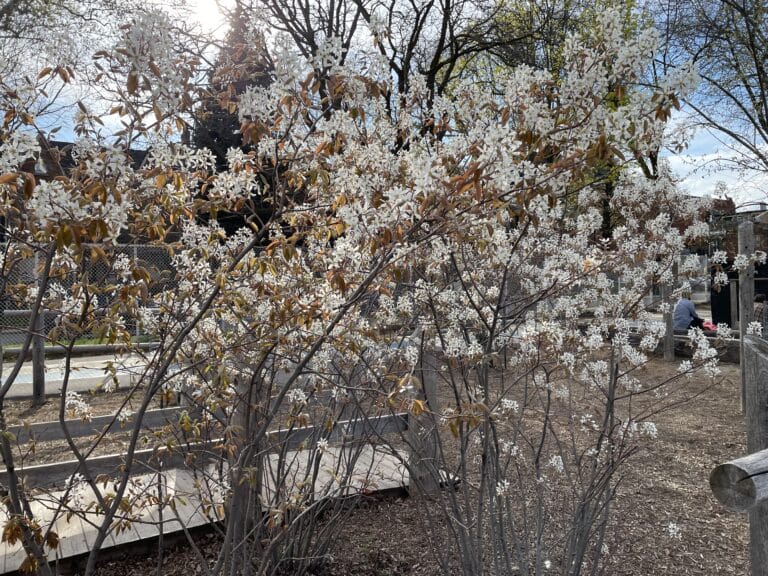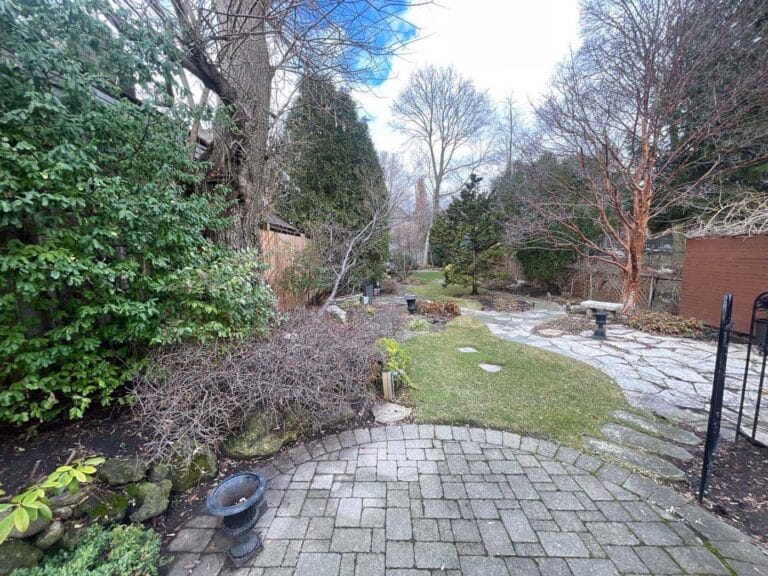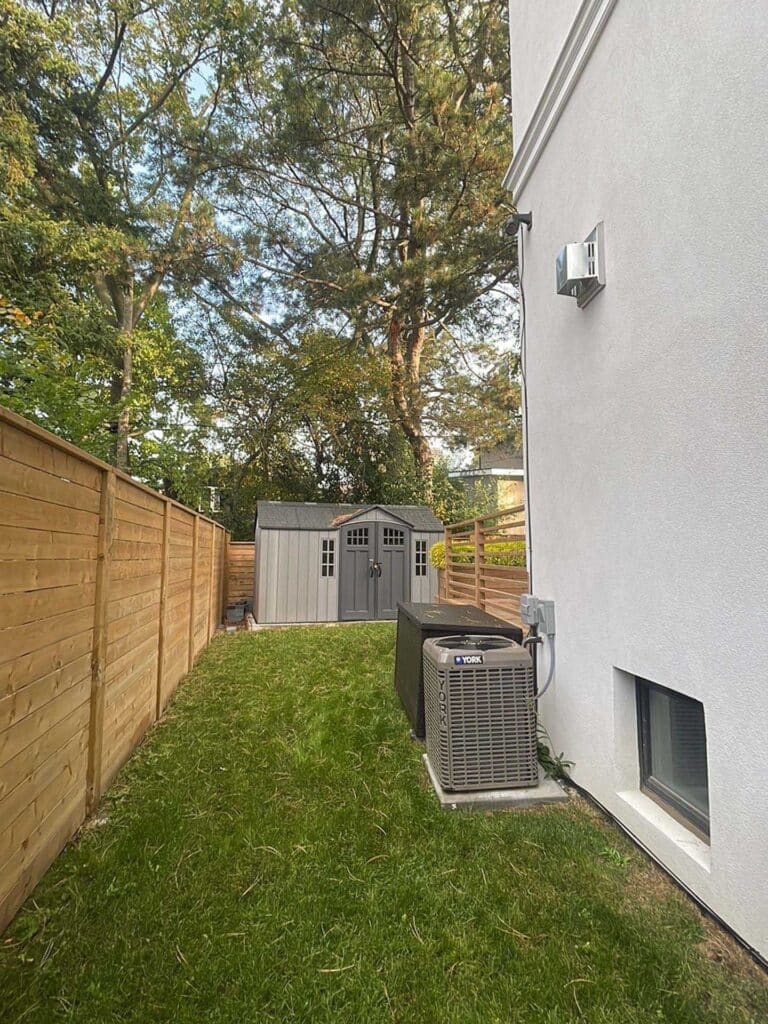Think you know your trees? Many homeowners are familiar with the sight of their home’s trees but know little about them and how to care for them. Homeowner tree myths are rampant! We break down some of the most common homeowner tree care myths we hear from Toronto residents.
Trees Don’t Need Maintenance
You only need to do anything with your tree if there’s something obviously wrong, right? Not exactly. It may seem unnecessary, but regular pruning every couple years helps keep trees healthy and thriving.
Treatments such as fertilizing also help keep your trees looking good. Trees in the city can be deficient in nutrients they’d get in the wild from other plants and decomposing plant matter, so fertilizing helps restore these nutrients. There are many issues that can affect tree health throughout their life cycle.
I Can Do What I Want With a Tree on My Property
One of the biggest myths about homeowner tree care is that people can do whatever they like with trees on their property. In fact, many of the trees Toronto homeowners think of as “their” trees aren’t theirs at all – they’re city property on the municipal road allowance. That means the city is responsible for maintenance, planting, and removal. Unless you have a very deep front yard, it’s very likely that trees in front of your house are “street trees” that are the city’s responsibility. Ontario sets standards for municipal road allowances throughout the province, so check your municipal guideline if you live elsewhere in the GTA.
For other trees, homeowners aren’t just allowed to cut down a tree because they feel like it. The city has to approve a removal and issue a permit with good reason.This can include trees that are dying, diseased, or invasive species, and trees that are in the way of planned construction (where unavoidable. In each case, Toronto homeowners are required to plant a new tree on the property or pay a replacement fee.
If Your Tree Looks Healthy, It’s Fine
It can be hard for the average person to spot an issue with a tree. Part of this is obvious: if it’s a big tree, most of us literally can’t see that much of it without climbing up or another way to view the upper branches and canopy of a tree. What looks fine from the ground may conceal browning leaves and uneven growth high up.
Most homeowners also aren’t specialists at examining trees. Arborists are experts in spotting and diagnosing tree conditions. We can see potential issues like dead or dying branches, uneven growth patterns, root or pest damage.
Regular pruning helps get expert eyes on your tree and can help you catch any other issues early.
If Your Tree Looks Unhealthy, It Needs to Be Cut Down
Not always true! This is one of the biggest myths in tree care. Our goal is to ensure tree health and prescribe maintenance when possible. A qualified arborist can assess an unhealthy-looking tree and recommend the best course of action. A tree may need pruning to remove unhealthy or hazardous branches or encourage new growth.
Diagnosing a fungal or insect infestation can allow arborists to treat a tree and nurse it back to health. In some cases, adding cabling or bracing can give enough support to a tree to preserve it. And sometimes, fertilizing or soil testing prior to treatment can help determine if a tree is lacking in nutrients and provide improved soil quality to bring it back to health.
When removal is necessary for health, safety, construction or other reasons it should go ahead – but there may be other options to save it.
Your Tree Is “Too Tall”
Tall trees aren’t necessarily unsafe. The bigger issue is usually that the trees needed maintenance pruning to ensure proper growth, or they were too aggressively pruned resulting in a stretching, heavy top with pockets of rot up the trunk. Since trees do not heal their wounds like us, every time they are cut is an opportunity to introduce rot or structural defects that can have a long term impact on the health and safety of the tree.
Trees know how to grow on their own terms – there isn’t a point at which they turn into a giant precarious Jenga tower. Different tree species have different ranges of growth, and many Ontario trees can grow quite tall. However, this is most likely for older trees, as newly-planted trees in urban areas don’t typically grow as high as trees that were planted before an area became built up. Tall old growth trees contribute greatly to beauty and air quality in our urban neighbourhoods.
If a tree is healthy and well-maintained, its height should never be a problem. If, however, branches are breaking off or the tree shows signs of dying off, then your tall tree could have a problem – just like with a short tree.
Whatever your tree’s height is, that’s when it’s time to call an arborist!
Your Neighbour’s Tree Is Causing Problems and You’re Stuck With It
Complaints about neighbours’ trees – like all sorts of complaints about neighbours – are common. In most cases, you have the ability to prune any branches of your neighbour’s tree that are overhanging your own property, as long as it won’t cause structural damage to the tree. That’s where an arborist comes in! However, it’s best to keep things neighbourly and see if your neighbour wants to handle having the tree pruned themselves, or if not, to at least have them on board with you hiring someone to prune the part overhanging your yard.
However, if the problem is leaves, fruit, acorns, needles, et cetera, shedding from high-up branches overhanging your neighbour’s yard….we’re afraid you’re out of luck. Acorns aren’t required to respect property lines. There are lots of good deals on rakes and brooms at this time of year!
Home Insurance Covers Tree Maintenance
For most homeowners, you’ll be paying the cost of tree care directly. The exception may be in an emergency event, such as a tree breaking during a storm, a branch collapsing on your house, etc. In these cases, normally you’ll contact both an arborist and your insurance company and submit a quote for review. Arborists don’t bill directly through insurance companies.
Home insurance doesn’t typically cover things like pruning, planting, or removal of healthy or at-risk but not imminently dangerous trees. That’s why we understand that tree care can be a big decision and expenditure for homeowners!
Homeowner Tree Truths
One big truth is that it pays off having a good arborist! We keep your property looking good, keep your trees healthy, and are there if it’s time for one to go (or if adverse weather makes that decision). Looking for a reliable arborist to be in your home contractor roster? Talk to us at Vista Tree.








